News
16 items found, showing page 1 of 2

Fossil discovery reveals new species of fanged reptile that once roamed Scotland
A fossil discovered on the Isle of Skye has revealed a new species and family of Jurassic reptile linked to the origins of lizards and snakes.

Tha fianais air mar a bhathas a’ stoidhleadh falt sna meadhan-aoisean aig caisteal suaicheanta Eilean Donnain air nochdadh ann an cruinneachadh beairteach arc-eòlais a fhuaras airson na nàisein.
Chaidh inneal tearc bhon 13mh linn, a bhathas a’ cleachdadh airson falt a stoidhleadh, fhaighinn le Taighean-tasgaidh Nàiseanta na h-Alba às dèidh dha a bhith air a lorg rè cladhach arc-eòlais aig aon de na caistealan as ainmeile san dùthaich.

Evidence for medieval hair styling at the iconic Eilean Donan castle is revealed as rich archaeological assemblage is acquired for the nation
A rare 13th century tool used for styling hair has been acquired by National Museums Scotland after being discovered during archaeological excavations at one of the country's most famous castles.
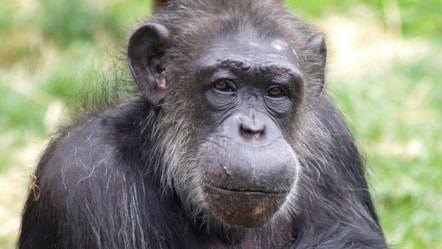
Celebrity chimp's life story revealed in pioneering study
A new study led by researchers at National Museums Scotland describes the first comprehensive osteobiography of a zoo animal, a cutting-edge scientific method that involves the analysis of bones and tissue. These techniques have been applied to reveal the in-depth story of the life of Choppers, star of the 1970s PG Tips advertising campaign, illustrating the changing role of zoos over the past 50 years.
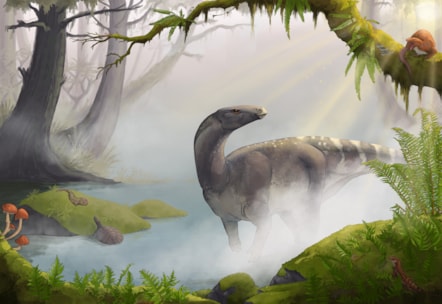
Jurassic dinosaur from the Isle of Skye revealed
A fossil first spotted in Skye over 50 years ago has finally been extracted from the base of the cliff where it was found and, following analysis, formally identified as a Jurassic dinosaur.
![Curator Dr Sarah Laurenson with objects from the collection of National Museums Scotland to be studied as part of new Gaelic language project, Tha Sgeul Ri Innse [credit Duncan McGlynn]-9](https://cdn.prgloo.com/media/f1f4298deb52493e902256404e503710.jpg?width=442&height=663)
New research project to reveal Gaelic stories behind museum objects
Powder horns from the 17th to 19th century, a road sign from Skye and a handmade crogan, or earthenware pot, are among 100 objects to be reappraised in a new project which aims to reveal the Gaelic stories and connections behind material held in the National Collection.
![Curator Dr Sarah Laurenson with objects from the collection of National Museums Scotland to be studied as part of new Gaelic language project, Tha Sgeul Ri Innse [credit Duncan McGlynn]-9](https://cdn.prgloo.com/media/f1f4298deb52493e902256404e503710.jpg?width=442&height=663)
Pròiseact rannsachaidh ùr gus na sgeulachdan Gàidhlig air cùl stuthan taigh-tasgaidh a shealltainn
Tha adhaircean pùdair bhon 17mh chun 19mh linn, soidhne-rathaid às an Eilean Sgitheanach agus crogan crèadha am measg 100 rud a thèid ath-mheasadh ann am pròiseact ùr a tha ag amas air na sgeulachdan agus na ceanglaichean Gàidhlig air cùl stuth a tha sa Chruinneachadh Nàiseanta fhoillseachadh.
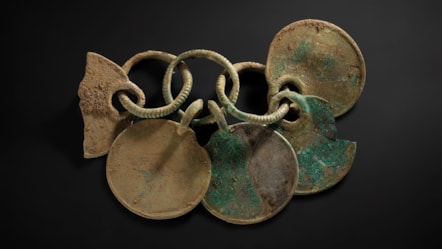
Unique Bronze Age Hoard acquired for the nation
One of the most significant hoards ever found in Scotland has been saved for the nation, having been acquired by National Museums Scotland. The Bronze Age Peebles Hoard was discovered in the Scottish Borders by a metal detectorist in 2020. It has since been painstakingly excavated, analysed and catalogued, revealing dozens of rare objects for the first time. Efforts are now underway to secure funding for the continued research and conservation of the hoard and to uncover the secrets of this one-of-a-kind discovery.
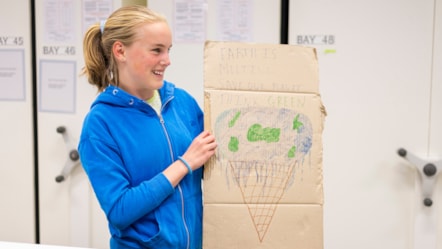
Young climate activist reunited with her protest artwork ahead of major exhibition
nms.ac.uk
perthmuseum.co.uk/watersrising
A placard created by an eight-year-old climate activist during the School Strike for Climate in 2019, will go on display for the first time in a major new exhibition at Perth Museum. Bridget, now 14, from Edinburgh has been reunited with her artwork at the National Museums Collection Centre before it goes on loan to Perth Museum for Waters Rising, opening 8 November 2024.

Fossil discovery reveals mammals grew more slowly in the Jurassic than they do today
Two unique Jurassic fossil discoveries from the Isle of Skye have shown that mammals in the time of the dinosaurs grew more slowly and lived longer than mammals today.
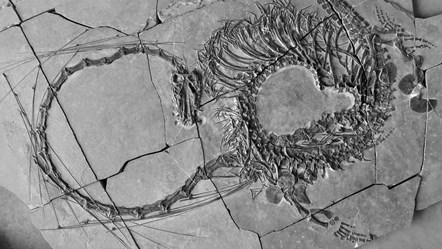
Palaeontologists reveal a 240-million-year-old ‘Chinese Dragon’
An international team of scientists have described new fossils of Dinocephalosaurus orientalis - a five-metre-long aquatic reptile from the Triassic period of China, dating to around 240 million years old.
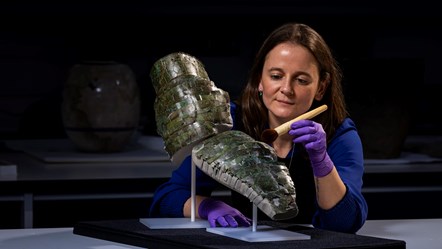
Ancient jigsaw puzzle is solved as rare Roman armour is reconstructed ahead of major exhibition
An exceptionally rare piece of Roman armour from National Museums Scotland’s collection has been painstakingly reconstructed from dozens of fragments. Dating from the middle of the second century, the brass arm guard will be seen in its entirety for the first time in almost 2000 years when it goes on loan to the British Museum for the major exhibition Legion: life in the Roman army next month.
